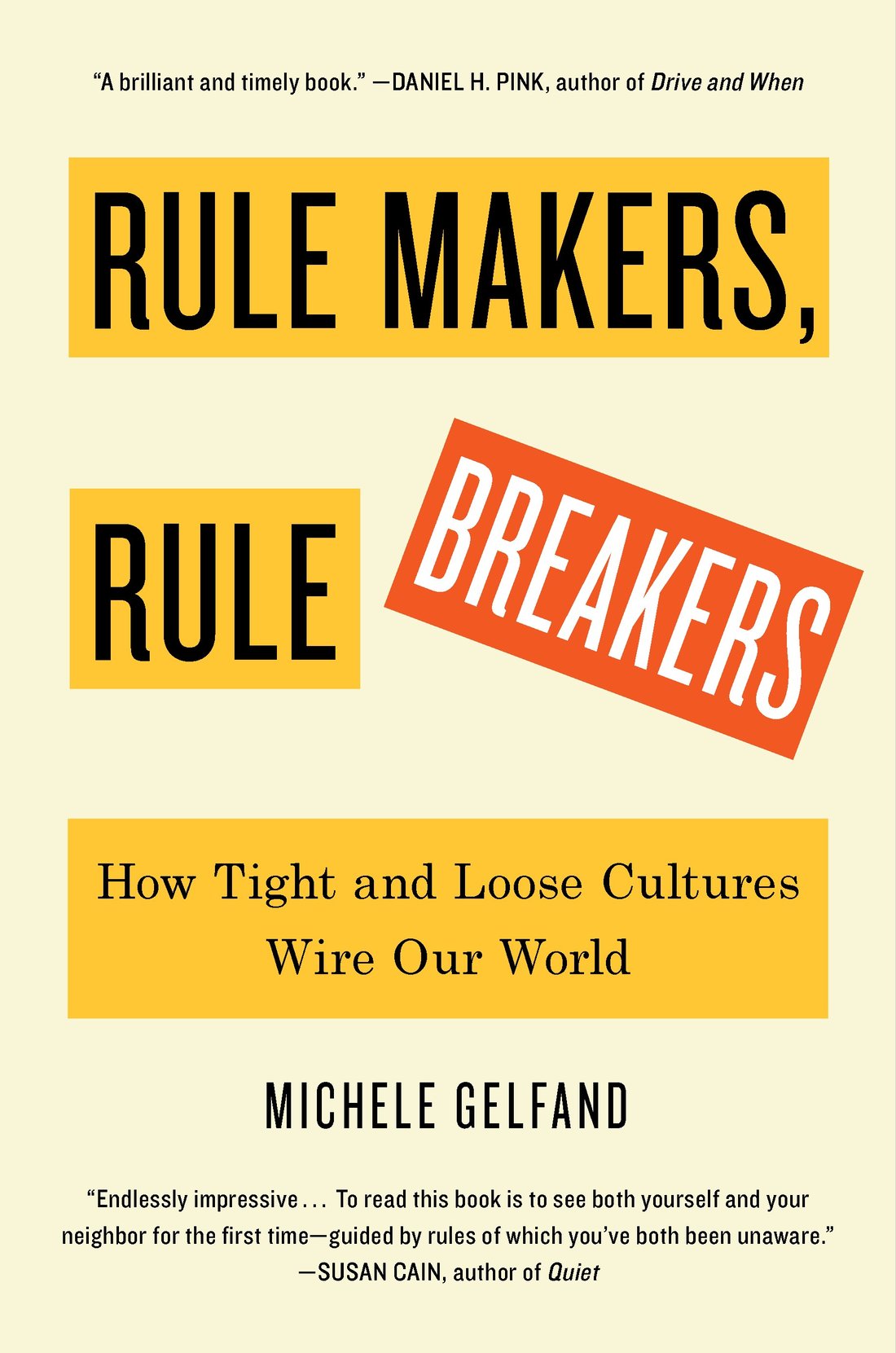
|
我們每天的很多時(shí)間是在單位度過(guò)的,,但我們很少認(rèn)真思考那些指導(dǎo)我們職場(chǎng)行為的文化基因,。單位的管理也是有松緊之分的。有些單位管理得很緊,,對(duì)不服從管理的員工有很多嚴(yán)格的規(guī)定和懲罰措施,。還有些單位管理得比較松散,對(duì)員工比較寬容,,規(guī)則也更少些,。 一個(gè)單位的管理風(fēng)格是松是緊,往往是由現(xiàn)實(shí)條件決定的,。有些行業(yè)面臨著比較大的危險(xiǎn),,因而需要無(wú)縫的協(xié)調(diào)。比如核電站,、醫(yī)院,、航空公司、警務(wù)部門(mén)和建筑行業(yè),,這些行業(yè)的風(fēng)險(xiǎn)很高,,有時(shí)甚至是生死攸關(guān)的風(fēng)險(xiǎn),所以他們給員工制定了很多必須遵守的規(guī)定,。 與法律法規(guī)有關(guān)行業(yè)往往也管理得比較嚴(yán),,比如律師、審計(jì)師,、銀行業(yè)和政府機(jī)關(guān)等等,,他們面臨著很高的職業(yè)責(zé)任,還有很多合規(guī)監(jiān)督流程,。 管理上比較松散的單位,,往往是那些面臨的威脅不大,且嚴(yán)肅性不高,、流動(dòng)性和多樣性比較強(qiáng)的小型工作團(tuán)體,。比如設(shè)計(jì),、咨詢(xún)和高科技行業(yè),。在這些地方,,戰(zhàn)略的快速調(diào)整是非常重要的。所以必須要有一定的自由度,,讓員工能跳出條條框框去思考和完成工作,。 雖然各個(gè)單位在管理的松緊程度上各有偏好,但這也并非是一成不變的,,還有些單位在管理上是外緊內(nèi)松或外松內(nèi)緊,,有些單位在某些時(shí)候甚至?xí)氐赘淖児芾盹L(fēng)格。這些都是由客戶(hù),、市場(chǎng)和利益相關(guān)人的不斷變化造成的——有時(shí)也是因?yàn)樵愀獾墓P(guān)事件,。有些企業(yè)可能確實(shí)適合嚴(yán)格的管理風(fēng)格,但這些企業(yè)的領(lǐng)導(dǎo)也必須知道,,在情形允許的時(shí)候,,如何給予員工更高的自由度。反過(guò)來(lái)說(shuō),,像特斯拉這樣管理較為松散的企業(yè),,如何知道何時(shí)和如何引入更強(qiáng)勢(shì)的規(guī)章制度,也會(huì)讓企業(yè)更加受益,。 現(xiàn)在,,很多企業(yè)都傾向于建立張弛有度的管理氛圍。這樣的公司在管理上,,有可能是外緊內(nèi)松,,有可能是外松內(nèi)緊,但在必要的時(shí)候,,他們也能夠吸取對(duì)方之所長(zhǎng),。當(dāng)一個(gè)管理較為松散的單位引入一些嚴(yán)格的管理措施時(shí),我稱(chēng)之為“有結(jié)構(gòu)的松散”,。反之,,在一個(gè)管理較為嚴(yán)格的單位營(yíng)造某種讓人放松的狀態(tài),我稱(chēng)之為“靈活的緊張”,。 |
We spend many of our waking hours in organizations, but we rarely think about the underlying cultural DNA that is guiding our behavior at work. Some organizations are tight—they have many strict rules and penalties for members who don’t obey them. Other organizations are loose—they’re more permissive and have fewer rules to abide by. The level of tightness-looseness in organizations tends to evolve for good reasons. Tightness abounds in industries that face threat and need seamless coordination. Think nuclear power plants, hospitals, airlines, police departments, and construction—they develop a lot of rules due to their life-or-death stakes. Occupations that are accountable to laws and regulations also tend to be tight. Think lawyers, auditors, bankers, and government officials, who are bound to high standards of professional accountability and have a lot of compliance monitoring. Loose organizations have much less threat and are characterized by highly informal, mobile, and diverse work groups. Think design, consulting, and high tech, where it’s critical to change gears quickly, have latitude, and think outside the box to get the job done. While companies and units within companies tend to veer tight or loose, tightness-looseness in organizations is continuously renegotiated, contested, and sometimes totally altered, due to the ever-changing nature of customers, markets, stakeholders, and clients—not to mention bad PR. For example, some businesses, like United, may indeed operate best under tight conditions, but these companies’ leaders need to know when and how to give employees more latitude when the situation warrants it. At the same time, loose businesses, such as Tesla, would benefit from knowing when and how to insert stronger norms into their daily practices. Many companies today are striving to develop tight-loose ambidexterity. A culturally ambidextrous company may favor tight over loose norms, even designating one as its dominant culture, while being capable of deploying the opposite set of norms when necessary. When already loose organizations insert some tight features into their daily operations, I call this structured looseness. On the flip side, steering a tight organizational culture into a looser state is what I refer to as flexible tightness. |

|
那么,,企業(yè)文化如何做到更加張弛有度呢,?實(shí)際上,無(wú)論變化多么微小,,企業(yè)文化的變革都是一件不容易的事,。全球某知名辦公家具制造企業(yè)的一位高管曾向我講過(guò),他們公司在引入輕松氛圍時(shí)遇到的重重挑戰(zhàn),。多年以來(lái),,該公司采取的都是嚴(yán)格的管理文化,,但調(diào)查顯示,很多員工覺(jué)得被績(jī)效評(píng)估體系壓得喘不過(guò)氣來(lái)——各種規(guī)章制度,、季度考核,、員工評(píng)級(jí)、目標(biāo)績(jī)效和文件指令很容易讓人產(chǎn)生窒息感,。很多員工覺(jué)得難以滿(mǎn)足這么多的預(yù)期,,因此效率日益下降。 第一次,,為了營(yíng)造外松內(nèi)緊的文化,,公司的人力資源部門(mén)有些矯枉過(guò)正,在評(píng)估體系的制定上給予了員工充分的自主權(quán),。這種過(guò)于松散的模式與公司一貫的嚴(yán)謹(jǐn)文化完全背道而馳,,讓人們產(chǎn)生了嚴(yán)重的不確定感。 這位高管告訴我:“我們意識(shí)到,,自由應(yīng)該是有界限的,,我們應(yīng)該回歸到嚴(yán)格一些的文化,但逐漸帶來(lái)一點(diǎn)寬松,?!痹摴局匦乱肓藰I(yè)績(jī)目標(biāo)和獎(jiǎng)勵(lì)機(jī)制,但通過(guò)允許員工參與到各個(gè)子目標(biāo)的制定,,從而帶來(lái)了一些靈活性,。這個(gè)新制度賦予了員工更大的靈活性和能動(dòng)性,同時(shí)也保留了企業(yè)偏愛(ài)的嚴(yán)格管理文化,。 在公司建立松緊結(jié)合,、張馳有度的文化過(guò)程中,最重要的是,,企業(yè)的領(lǐng)導(dǎo)者一定要支持這些新舉措,。 以USAToday.com的上線為例:1995年,為了趕上媒體行業(yè)的數(shù)字化浪潮,,時(shí)任《今日美國(guó)》董事長(zhǎng)兼出品人的湯姆·柯利準(zhǔn)備把該公司的紙媒業(yè)務(wù)搬到網(wǎng)上去,。他聘請(qǐng)了新的高管,建立了一個(gè)管理環(huán)境比傳統(tǒng)新聞業(yè)寬松得多的新部門(mén),。他把自己的愿景傳達(dá)給了紙媒部門(mén)的領(lǐng)導(dǎo)者,,并且讓那些不買(mǎi)賬的高管統(tǒng)統(tǒng)走路了。 這種雷厲風(fēng)行的舉措,,在領(lǐng)導(dǎo)層中形成了“統(tǒng)一戰(zhàn)線和一致目標(biāo)”,。《領(lǐng)導(dǎo)與顛覆》一書(shū)作者邁克爾·圖什曼認(rèn)為,這一點(diǎn)對(duì)于任何組織變革都是至關(guān)重要的,。為了打消新生網(wǎng)絡(luò)媒體和傳統(tǒng)紙媒之間的相互疑慮,,柯利努力促進(jìn)網(wǎng)媒與紙媒之間的溝通協(xié)作。他要求網(wǎng)絡(luò)媒體,、印刷媒體和電視部門(mén)的負(fù)責(zé)人都要參加每天的編輯會(huì)議,分享彼此的想法,,選擇最好的新聞故事,,并建立一個(gè)有凝聚力的戰(zhàn)略。他還建立了一項(xiàng)跨部門(mén)的獎(jiǎng)金制度,,無(wú)論任何部門(mén)只要達(dá)到了目標(biāo)都可以拿到這筆獎(jiǎng)金,。最終,柯利達(dá)成了一種有效的平衡,,公司真正實(shí)現(xiàn)了文化上的張馳有度,。 要建立張弛有度的企業(yè)文化,是沒(méi)有一種“屢試不爽”的方法的,。有些公司靠的是建立共同目標(biāo),,讓管理嚴(yán)格的部門(mén)和松散的部門(mén)產(chǎn)生相互尊重。有些公司則是直接將寬松或嚴(yán)格的因素引入現(xiàn)有的管理體系,。但不管它是如何完成的,,總而言之,企業(yè)成功的關(guān)鍵,,就是培養(yǎng)張弛有度的二元文化,。(財(cái)富中文網(wǎng)) 本文作者米歇爾·蓋爾芬德是馬里蘭大學(xué)羅伯特史密斯商學(xué)院的心理學(xué)教授。本文節(jié)選自她出版的新書(shū)《規(guī)則的制定者與破壞者》,。這本書(shū)于2018年9月11日由斯克里布諾出版社出版,。 譯者:樸成奎 |
How can organizations become more ambidextrous? It’s not easy, no matter how minor the change. A senior executive at one of the world’s largest manufacturers of office furniture relayed to me the bumpy road the firm took as it tried to loosen up operations. For years it had operated a tight ship, but surveys of salaried employees revealed that they felt the performance appraisal system was overwhelming—full of forms, quarterly evaluations, employee ratings, and explicitly defined objectives attached to stacks of instructional documents. Workers had difficulty meeting these countless expectations, which led to disengagement. In its first attempt at flexible tightness, the company’s HR department adopted an entirely opposite system that gave employees complete freedom to decide how they were going to be evaluated. Such a loose model defied the company’s generally tight culture and made people feel too uncertain. “We realized we have to have some boundaries on this freedom, and return to a tighter culture, but gradually bring in a bit of looseness,” the senior executive told me. The company ultimately reintroduced work objectives and rewards systems, but provided flexible options by allowing employees to participate in customizing sub-goals. The new system gave employees more flexibility and agency while retaining the overall dominant tight culture that they preferred. As companies work toward greater tight-loose ambidexterity, one thing is clear: During these shifts, it’s critical for organizational leaders to embrace the new initiatives. Consider the launch of USAToday.com. In 1995, to keep in step with the news industry’s digital revolution, Tom Curley, then USA Today’s president and publisher, prepared to expand the company’s print media business online. He hired new leadership to create a department that was much looser than traditional newsrooms. He communicated his vision to existing print media leaders and those executives who didn’t buy in to the new vision were swiftly removed or transferred. This created a “united front and consistent message” among the leadership, which Michael Tushman, co-author of Lead and Disrupt, cites as critical for any organizational change. Curley worked toward promoting a collaborative spirit between the new digital division and the old school print division to deal with fears on both sides. He required the unit heads for web, print, and TV to attend daily editorial meetings to share ideas, choose the best stories to feature, and establish a cohesive strategy. He also created an incentive for cooperation—a bonus program that was contingent on all the media divisions hitting their goals. Ultimately, Curley struck an effective tight-loose balance, and the company became truly ambidextrous. There isn’t one best way to develop tight-loose ambidexterity within organizations. Some companies do this by cultivating mutual goals and respect across tight and loose units. Other companies channel more looseness directly into a tight group, or tightness into a loose group. Regardless of how it’s accomplished, the key to organizational success is developing tight-loose ambidexterity. Michele Gelfand is a distinguished professor of psychology and affiliate of the Robert H. Smith School of Business at the University of Maryland. This article is excerpted from her upcoming book, Rule Makers, Rule Breakers: How Tight and Loose Cultures Wire Our World, which will be published on September 11, 2018, by Scribner, a division of Simon & Schuster, Inc. |






